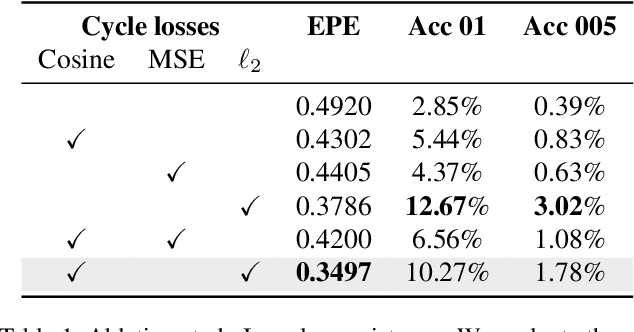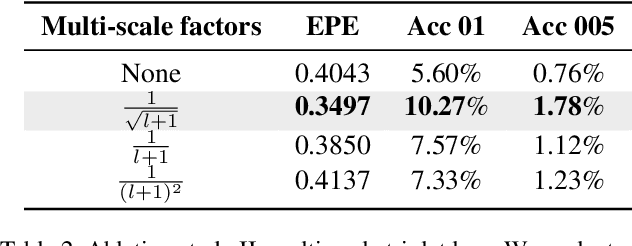Joris van Vugt
Adversarial Self-Supervised Scene Flow Estimation
Nov 01, 2020



Abstract:This work proposes a metric learning approach for self-supervised scene flow estimation. Scene flow estimation is the task of estimating 3D flow vectors for consecutive 3D point clouds. Such flow vectors are fruitful, \eg for recognizing actions, or avoiding collisions. Training a neural network via supervised learning for scene flow is impractical, as this requires manual annotations for each 3D point at each new timestamp for each scene. To that end, we seek for a self-supervised approach, where a network learns a latent metric to distinguish between points translated by flow estimations and the target point cloud. Our adversarial metric learning includes a multi-scale triplet loss on sequences of two-point clouds as well as a cycle consistency loss. Furthermore, we outline a benchmark for self-supervised scene flow estimation: the Scene Flow Sandbox. The benchmark consists of five datasets designed to study individual aspects of flow estimation in progressive order of complexity, from a moving object to real-world scenes. Experimental evaluation on the benchmark shows that our approach obtains state-of-the-art self-supervised scene flow results, outperforming recent neighbor-based approaches. We use our proposed benchmark to expose shortcomings and draw insights on various training setups. We find that our setup captures motion coherence and preserves local geometries. Dealing with occlusions, on the other hand, is still an open challenge.
Vendor-independent soft tissue lesion detection using weakly supervised and unsupervised adversarial domain adaptation
Aug 14, 2018Abstract:Computer-aided detection aims to improve breast cancer screening programs by helping radiologists to evaluate digital mammography (DM) exams. DM exams are generated by devices from different vendors, with diverse characteristics between and even within vendors. Physical properties of these devices and postprocessing of the images can greatly influence the resulting mammogram. This results in the fact that a deep learning model trained on data from one vendor cannot readily be applied to data from another vendor. This paper investigates the use of tailored transfer learning methods based on adversarial learning to tackle this problem. We consider a database of DM exams (mostly bilateral and two views) generated by Hologic and Siemens vendors. We analyze two transfer learning settings: 1) unsupervised transfer, where Hologic data with soft lesion annotation at pixel level and Siemens unlabelled data are used to annotate images in the latter data; 2) weak supervised transfer, where exam level labels for images from the Siemens mammograph are available. We propose tailored variants of recent state-of-the-art methods for transfer learning which take into account the class imbalance and incorporate knowledge provided by the annotations at exam level. Results of experiments indicate the beneficial effect of transfer learning in both transfer settings. Notably, at 0.02 false positives per image, we achieve a sensitivity of 0.37, compared to 0.30 of a baseline with no transfer. Results indicate that using exam level annotations gives an additional increase in sensitivity.
 Add to Chrome
Add to Chrome Add to Firefox
Add to Firefox Add to Edge
Add to Edge